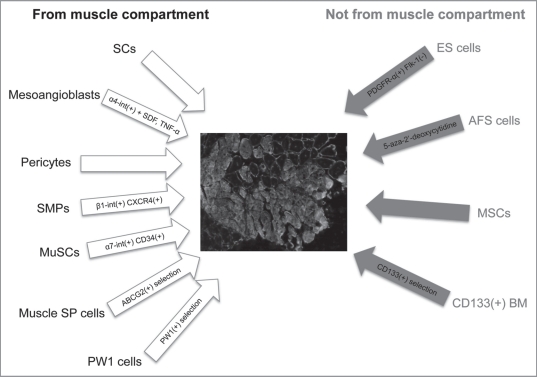Figure 1.
The scheme shows the stem cell types, derived from muscle and non-muscle compartments, able to contribute to muscle regeneration (in the center, represented as green fluorescent protein-positive fibers, counterstained with laminin, the contribution of GFP + SCs when injected after injury, unpublished data). From the muscle compartment (left): satellite cells (SCs); mesoangioblasts, overexpressing β4-integrin and after administration of SDF-1 and TNFα; pericytes; skeletal muscle precursors (SMPs), selected for α1-integrin and CXCR4; muscle stem cells (MuSCs), selected for α7-integrin and CD34; side-population (SP) cells, selected for the ABCG2 transporter; PW1-cells, selected for PW1. From the non-muscle compartment (right): embryonic stem (ES) cells, positively selected for PDGFRα and negatively for Flk-1; amniotic fluid stem (AFS) cells, treated with 5-aza-2′-deoxycytidine; mesenchymal stem cells (MSCs); CD133(+) BM, mesenchymal cells from bone marrow selected for CD133.

